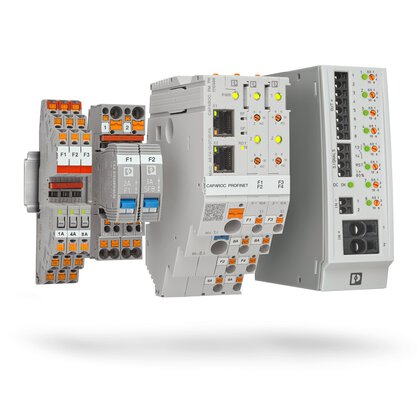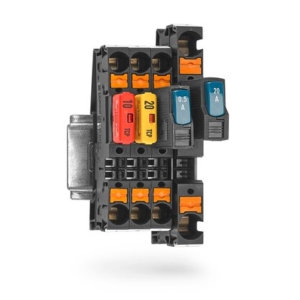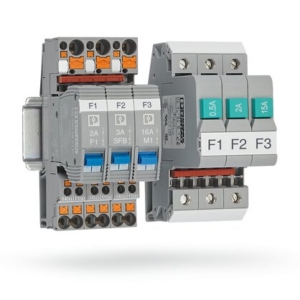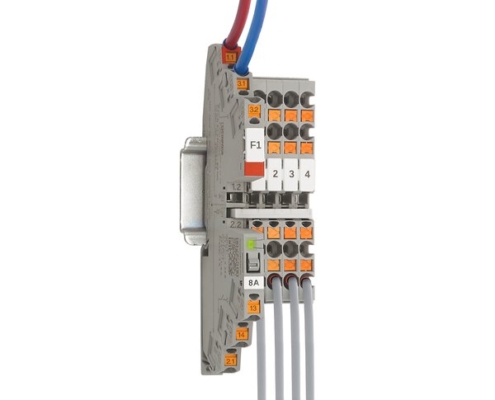Ασφάλειες
Device circuit breakers
Device circuit breakers protect your equipment against overload and short-circuit currents and selectively shut down just the affected circuit in the event of a fault.
To provide the ideal protection, our circuit breakers use electronic, thermomagnetic, and thermal technologies.
Optimize your production process and minimize downtimes by using our overcurrent protection.







